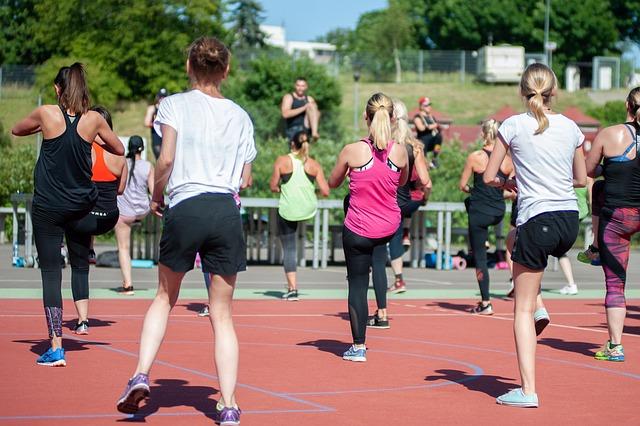In the bustling symphony of daily life, our lower back often bears the brunt of our endeavors, from the simple act of sitting at a desk to the more demanding tasks of lifting and bending. Yet, nestled within the core of our being lies a hidden powerhouse, capable of providing the strength and stability needed to support this vital region. Welcome to the world of core exercises for lower back support—a journey that not only fortifies the foundation of our bodies but also enhances our overall well-being. In this article, we will explore a variety of exercises designed to strengthen the core, offering both relief and resilience to those seeking to nurture their lower back. Whether you are a fitness enthusiast or someone looking to alleviate discomfort, these exercises can serve as your guide to a healthier, more balanced life.
Strengthening Your Foundation: Key Core Exercises for a Resilient Lower Back
Incorporating core exercises into your routine can dramatically enhance the resilience of your lower back. A strong core acts as a natural brace for your spine, distributing the stress and reducing the risk of injury. To fortify your foundation, consider integrating the following exercises:
- Plank Variations: This classic exercise targets multiple core muscles. Try side planks to engage your obliques or add a stability ball for an extra challenge.
- Bird Dog: Enhances balance and stability by engaging both your back and abdominal muscles. Begin on all fours, extend one arm and the opposite leg, then switch sides.
- Bridge Pose: Strengthens the glutes and lower back while opening the hips. Elevate your hips towards the ceiling and hold, ensuring your knees remain aligned with your feet.
Incorporating these exercises regularly will not only build a robust core but also provide essential support to your lower back, paving the way for greater overall strength and mobility.

Understanding the Anatomy: How Core Muscles Influence Back Health
The intricate network of muscles that make up our core serves as the central support system for the entire body, significantly influencing spinal stability and overall back health. Core muscles, including the rectus abdominis, obliques, and transverse abdominis, function together to maintain balance and posture. These muscles work synergistically to support the spine, reduce strain, and prevent injuries.
- Rectus Abdominis: Often referred to as the ”six-pack,” this muscle plays a crucial role in flexing the spine and maintaining upright posture.
- Obliques: Located on the sides of the abdomen, these muscles are essential for trunk rotation and lateral movements.
- Transverse Abdominis: Acting like a natural corset, this deep muscle stabilizes the spine and pelvis.
Strengthening these muscles through targeted exercises can alleviate lower back pain and prevent further issues. By fostering a robust core, we not only enhance physical performance but also promote a resilient, well-supported back.
Tailored Workouts: Customizing Core Routines for Individual Needs
When it comes to strengthening your core for enhanced lower back support, personalization is key. Each individual’s needs vary based on factors like fitness level, body type, and any existing conditions. Here are some core exercises that can be customized to bolster your lower back:
- Planks: Adjust the duration and intensity to match your comfort level. Start with a basic forearm plank and gradually introduce variations like side planks or plank rotations for a comprehensive core challenge.
- Bird-Dogs: A gentle yet effective exercise that enhances stability. Modify the pace and repetitions to fit your stamina. Focus on slow, controlled movements to engage the core and protect the lower back.
- Bridges: Perfect for activating the glutes and lower back muscles. To customize, experiment with single-leg bridges or add a stability ball for increased difficulty, ensuring a tailored approach to strengthening.
Incorporating these exercises into your routine not only fortifies the core but also promotes better posture and reduced back pain. Remember to listen to your body and adjust the workouts to suit your personal needs and goals.

Expert Tips: Enhancing Core Stability to Prevent Lower Back Pain
Strengthening your core is essential for maintaining a healthy spine and preventing lower back discomfort. A well-rounded core routine focuses on more than just the abs; it includes muscles that stabilize the pelvis, hips, and spine. Incorporate the following expert-recommended exercises into your fitness regimen to bolster your core and support your lower back:
- Plank Variations: Standard planks, side planks, and forearm planks engage multiple muscle groups simultaneously. To increase difficulty, try adding leg lifts or rotating planks.
- Bird Dog: This exercise enhances stability and coordination. Begin on all fours, extending one arm and the opposite leg, holding for a few seconds before switching sides.
- Dead Bug: Lying on your back with arms and legs raised, slowly lower opposite limbs while keeping your core engaged. This movement strengthens the deep abdominal muscles.
- Bridge: Activate your glutes and lower back by lifting your hips towards the ceiling while keeping your feet grounded. Hold the position to maximize the benefit.
- Russian Twists: Sitting with your feet off the ground, twist your torso from side to side. For added resistance, use a weight or medicine ball.
Implementing these exercises regularly can lead to improved posture, reduced risk of injury, and a stronger, more resilient back. Remember to focus on form and control to maximize effectiveness and prevent strain.
To Conclude
As we draw our exploration of core exercises for lower back support to a close, remember that the journey to a resilient back is both an art and a science. With each mindful movement and deliberate breath, you are not just strengthening muscles, but also crafting a foundation of stability and ease. Embrace these exercises as allies in your daily routine, and let them guide you towards a life of fluid motion and comfort. Whether you are lifting the weight of the day or simply standing tall, may your core serve as a steadfast pillar of support. Keep moving with intention, and let your strengthened core lead the way.


































